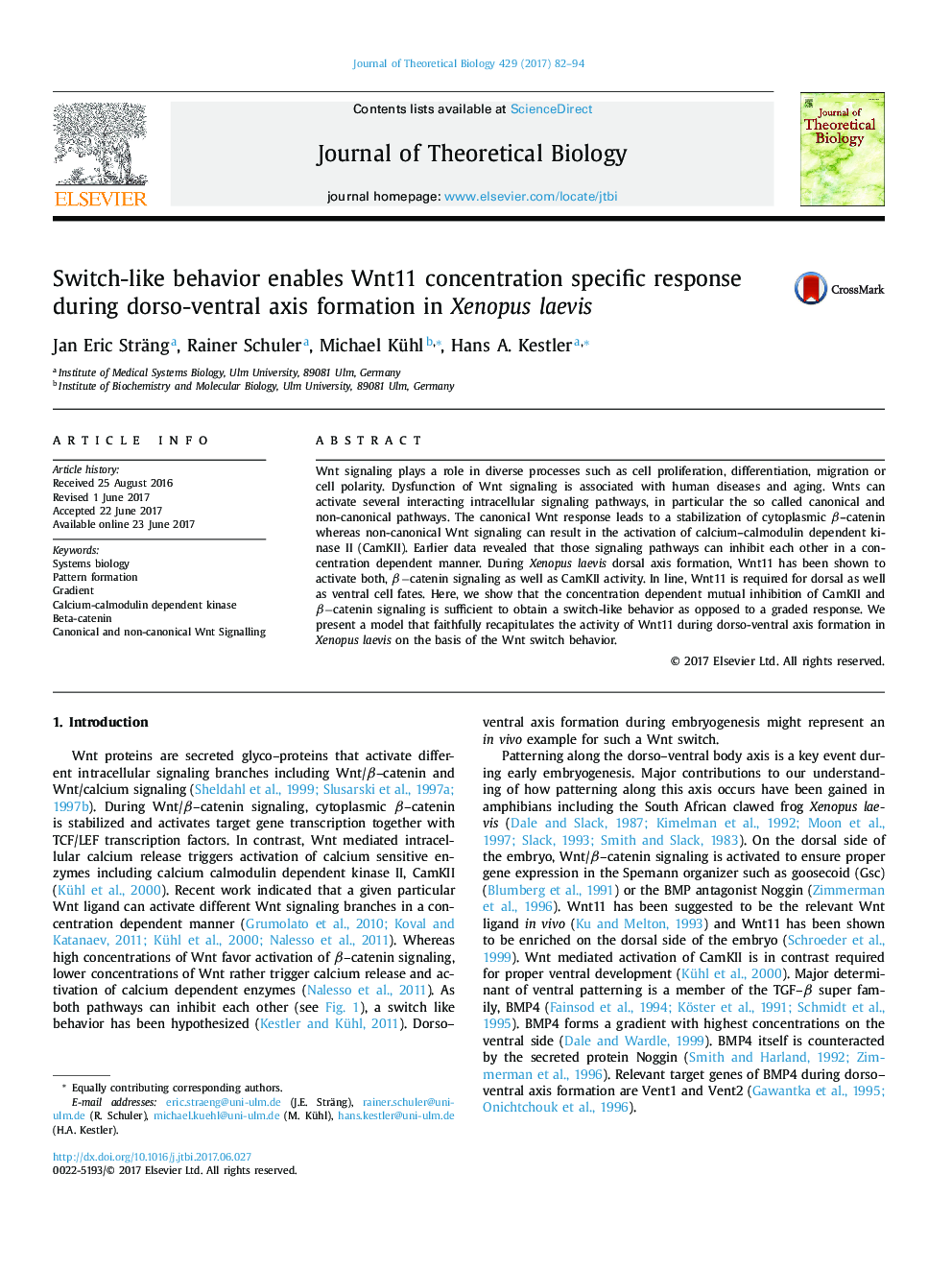| کد مقاله | کد نشریه | سال انتشار | مقاله انگلیسی | نسخه تمام متن |
|---|---|---|---|---|
| 5759967 | 1623781 | 2017 | 13 صفحه PDF | دانلود رایگان |
عنوان انگلیسی مقاله ISI
Switch-like behavior enables Wnt11 concentration specific response during dorso-ventral axis formation in Xenopus laevis
دانلود مقاله + سفارش ترجمه
دانلود مقاله ISI انگلیسی
رایگان برای ایرانیان
کلمات کلیدی
موضوعات مرتبط
علوم زیستی و بیوفناوری
علوم کشاورزی و بیولوژیک
علوم کشاورزی و بیولوژیک (عمومی)
پیش نمایش صفحه اول مقاله

چکیده انگلیسی
Wnt signaling plays a role in diverse processes such as cell proliferation, differentiation, migration or cell polarity. Dysfunction of Wnt signaling is associated with human diseases and aging. Wnts can activate several interacting intracellular signaling pathways, in particular the so called canonical and non-canonical pathways. The canonical Wnt response leads to a stabilization of cytoplasmic β-catenin whereas non-canonical Wnt signaling can result in the activation of calcium-calmodulin dependent kinase II (CamKII). Earlier data revealed that those signaling pathways can inhibit each other in a concentration dependent manner. During Xenopus laevis dorsal axis formation, Wnt11 has been shown to activate both, βâcatenin signaling as well as CamKII activity. In line, Wnt11 is required for dorsal as well as ventral cell fates. Here, we show that the concentration dependent mutual inhibition of CamKII and βâcatenin signaling is sufficient to obtain a switch-like behavior as opposed to a graded response. We present a model that faithfully recapitulates the activity of Wnt11 during dorso-ventral axis formation in Xenopus laevis on the basis of the Wnt switch behavior.
ناشر
Database: Elsevier - ScienceDirect (ساینس دایرکت)
Journal: Journal of Theoretical Biology - Volume 429, 21 September 2017, Pages 82-94
Journal: Journal of Theoretical Biology - Volume 429, 21 September 2017, Pages 82-94
نویسندگان
Jan Eric Sträng, Rainer Schuler, Michael Kühl, Hans A. Kestler,